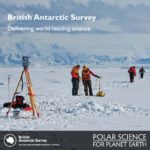Global model of plasmaspheric hiss from multiple satellite observations
1 June, 2018 by Nigel Meredith, Richard Horne, Tobias Kersten
We present a global model of plasmaspheric hiss, using data from eight satellites, extending the coverage and improving the statistics of existing models. We use geomagnetic activity dependent templates to…Read more on Global model of plasmaspheric hiss from multiple satellite observations

